Coffins were made with the Japanese Golden Pines.
As I posted before, this Golden Pines were very expensive materials for building. This wood had been used for building palaces or temples.
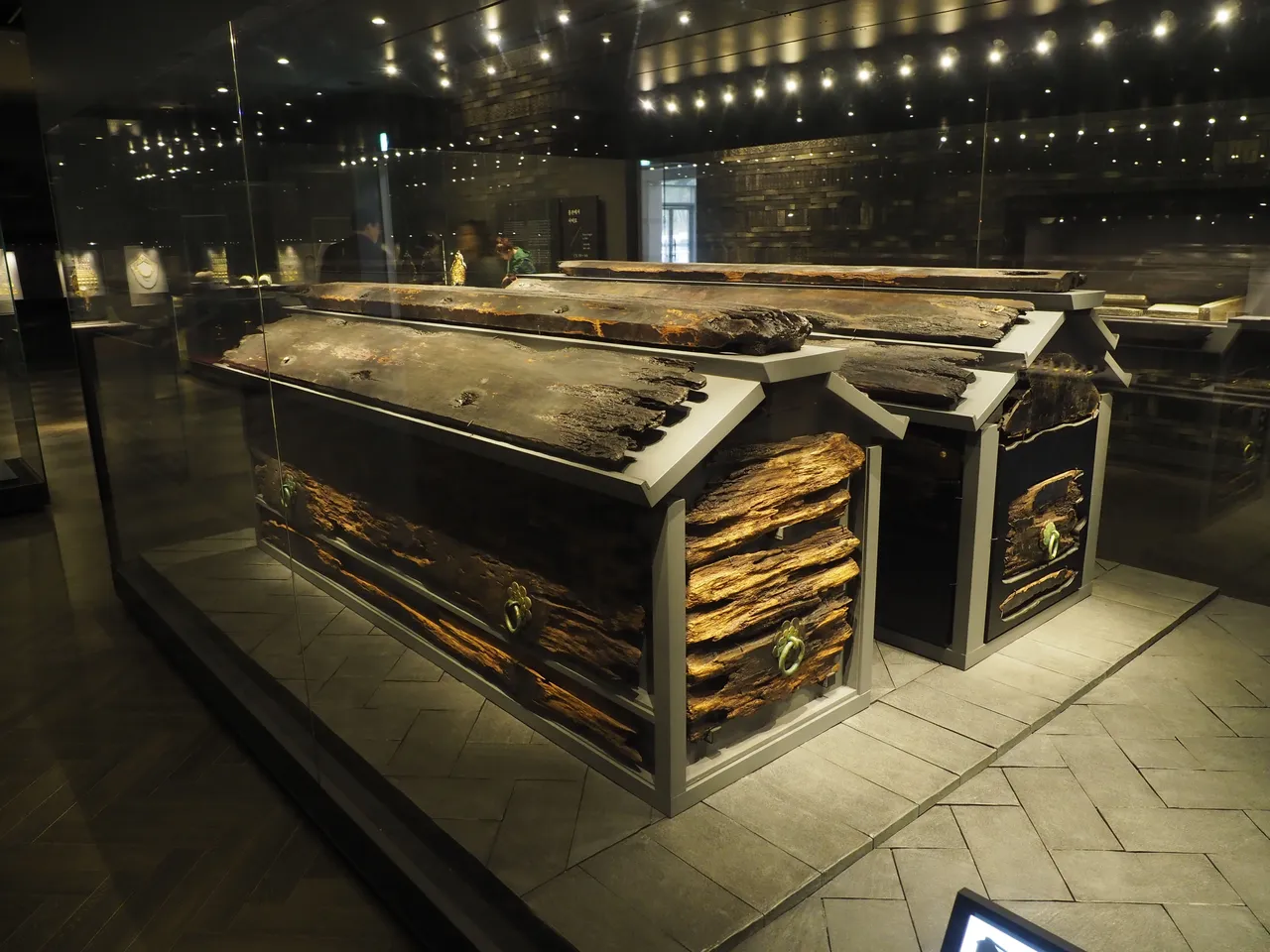
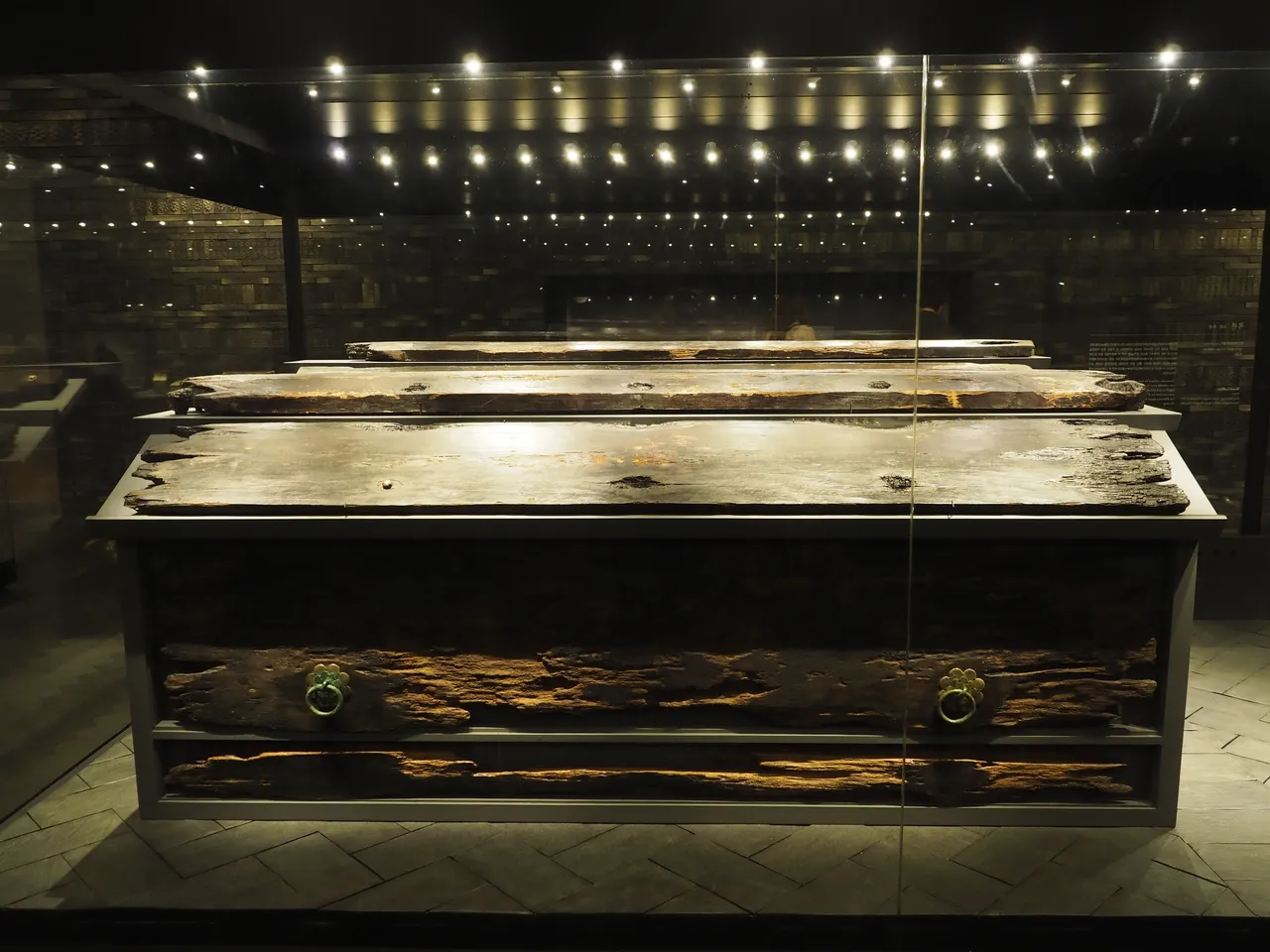
The coffins must had been used to preserve King and Queen’s body for a long time.
The woods had not been damaged seriously even for more than 1500 years.
I took the photos of wood in close shot. The situation was not bad.
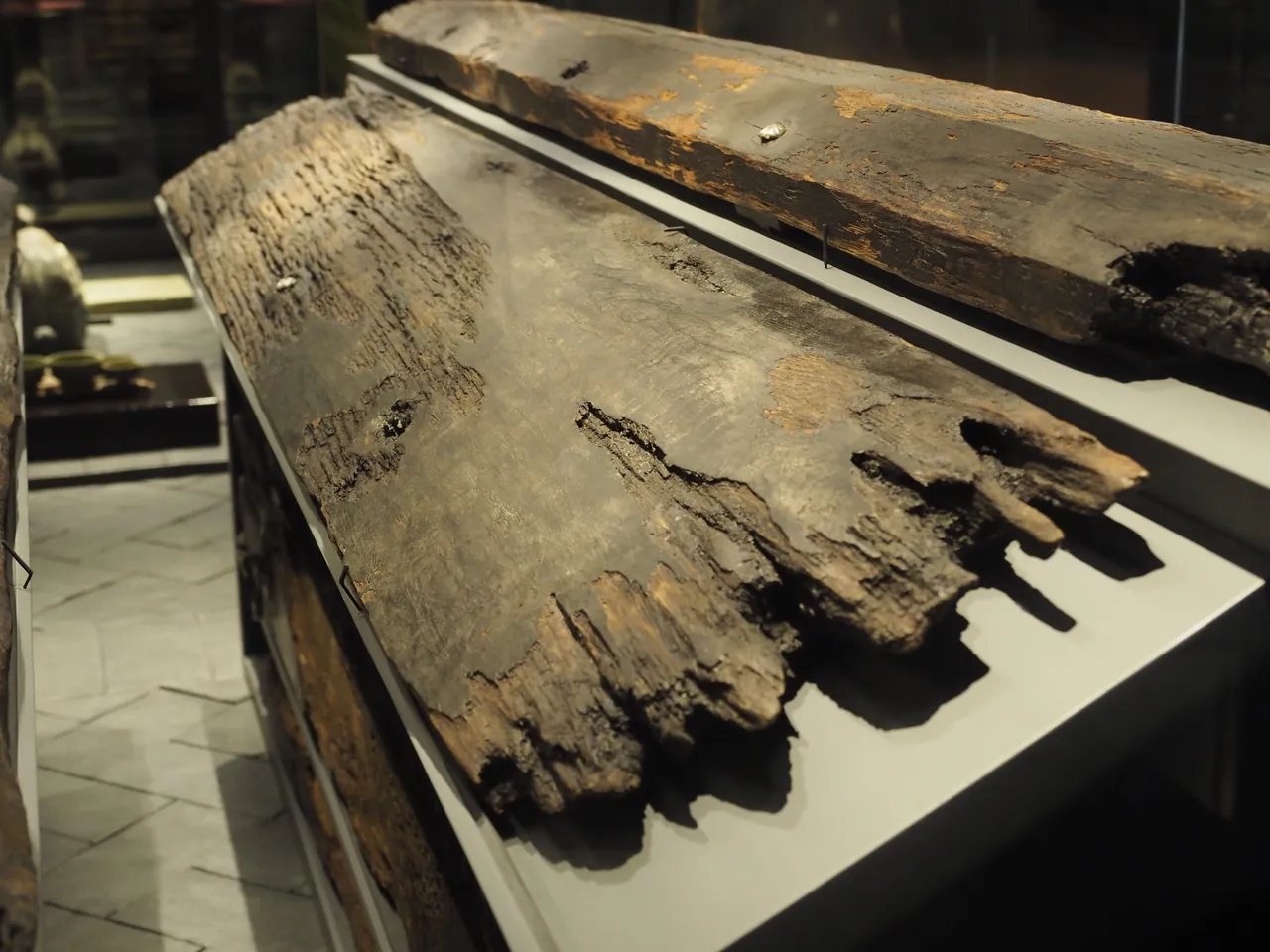
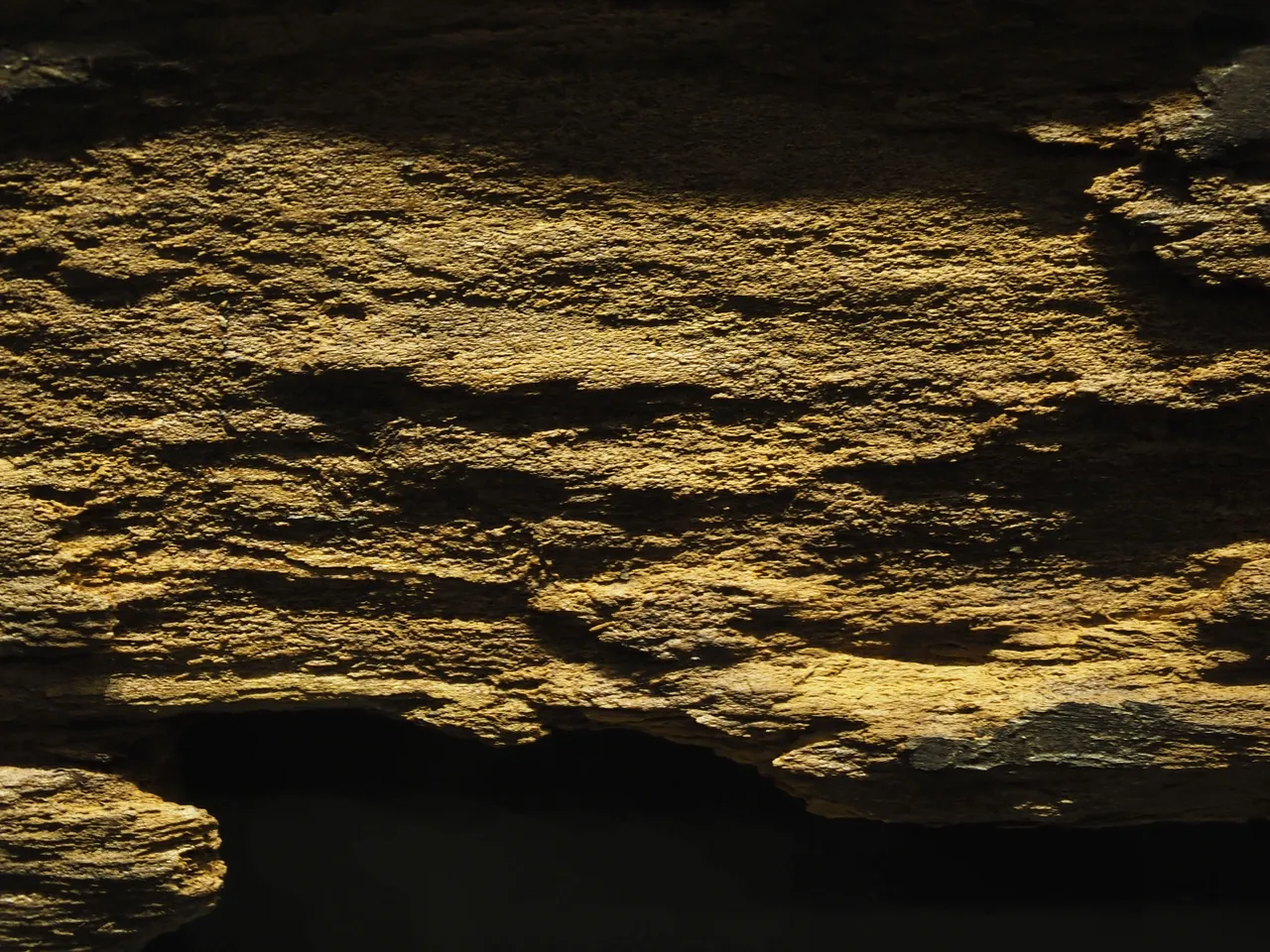
The color of wood was so awesome, even though the wood had went through 1500 years of history.
There were some decorations on the wooden materials.
It was strange for me that the patterns of nails and decorations were not lotus like, but cherryblossom flower like.
It seemed that people did not focus on the patterns of the nails and the decorations.
But it was not normal for me that they didn’t use lotus pattern of Buddhism.

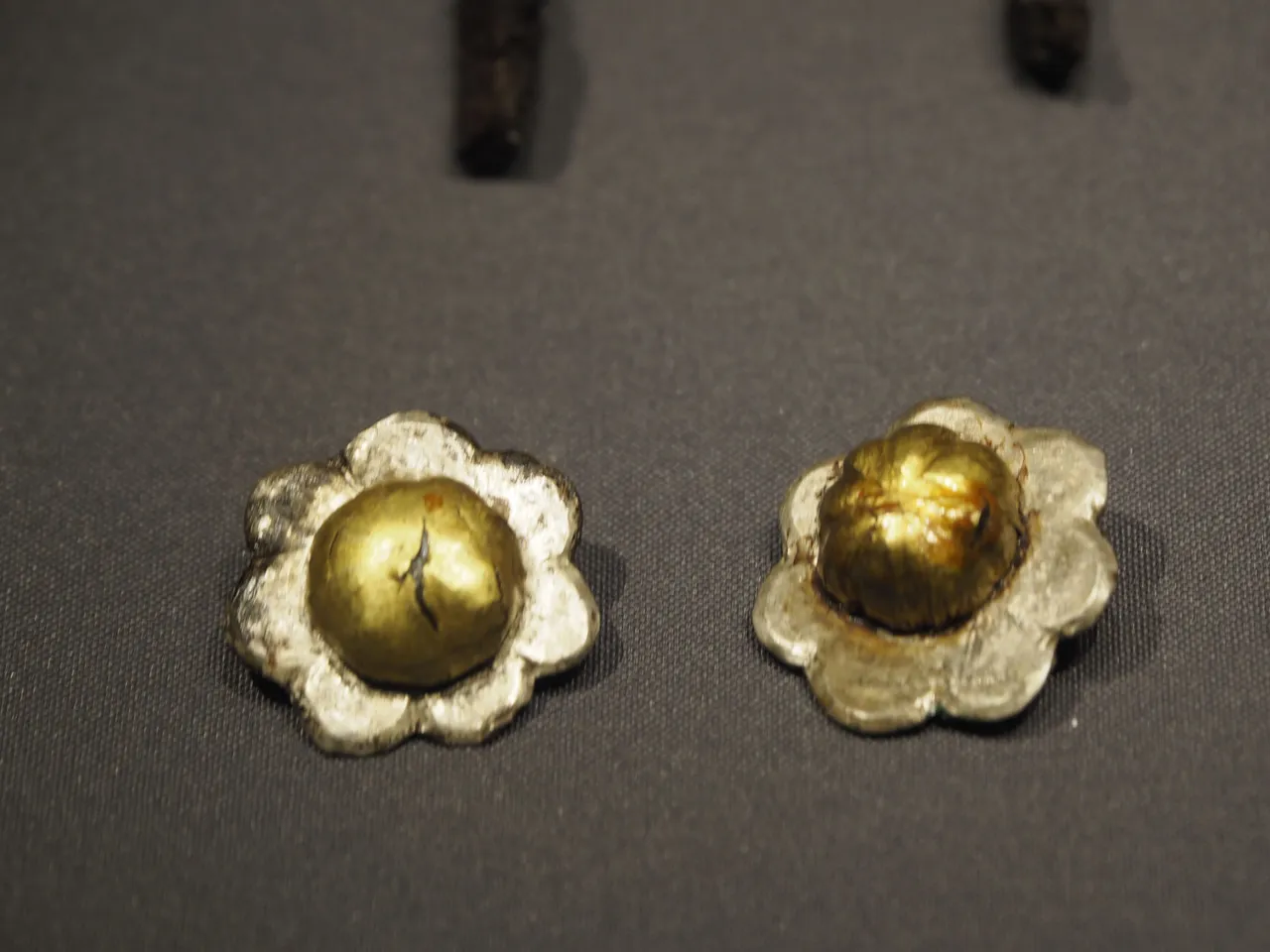
The patterns were looked similar to the symbol of Japanese Royal family.
In fact the Japanese Golden Pines and the Patterns of the nails and the decorations seemed to indicate some connections between Baekje and Japan.
There were the nails of coffin displayed besides of the coffin.
It was common that the nails never have been used in Architecture in Korea and coffin, because the nails could decay the woods.
So it was curious for me why Baekle had used the nails in making the coffins for King and Queen.
But this nails were not an ordinary steel, it was silver and gold.
It seemed that gold and silver nails would not damage the wooden materials.
Hundreds of silver and gold nails were displayed, and I took photos of some nails among them.
There was a display of inside of the coffin.
It was said that King and Queen were laid in the coffin as below.
Below was King's
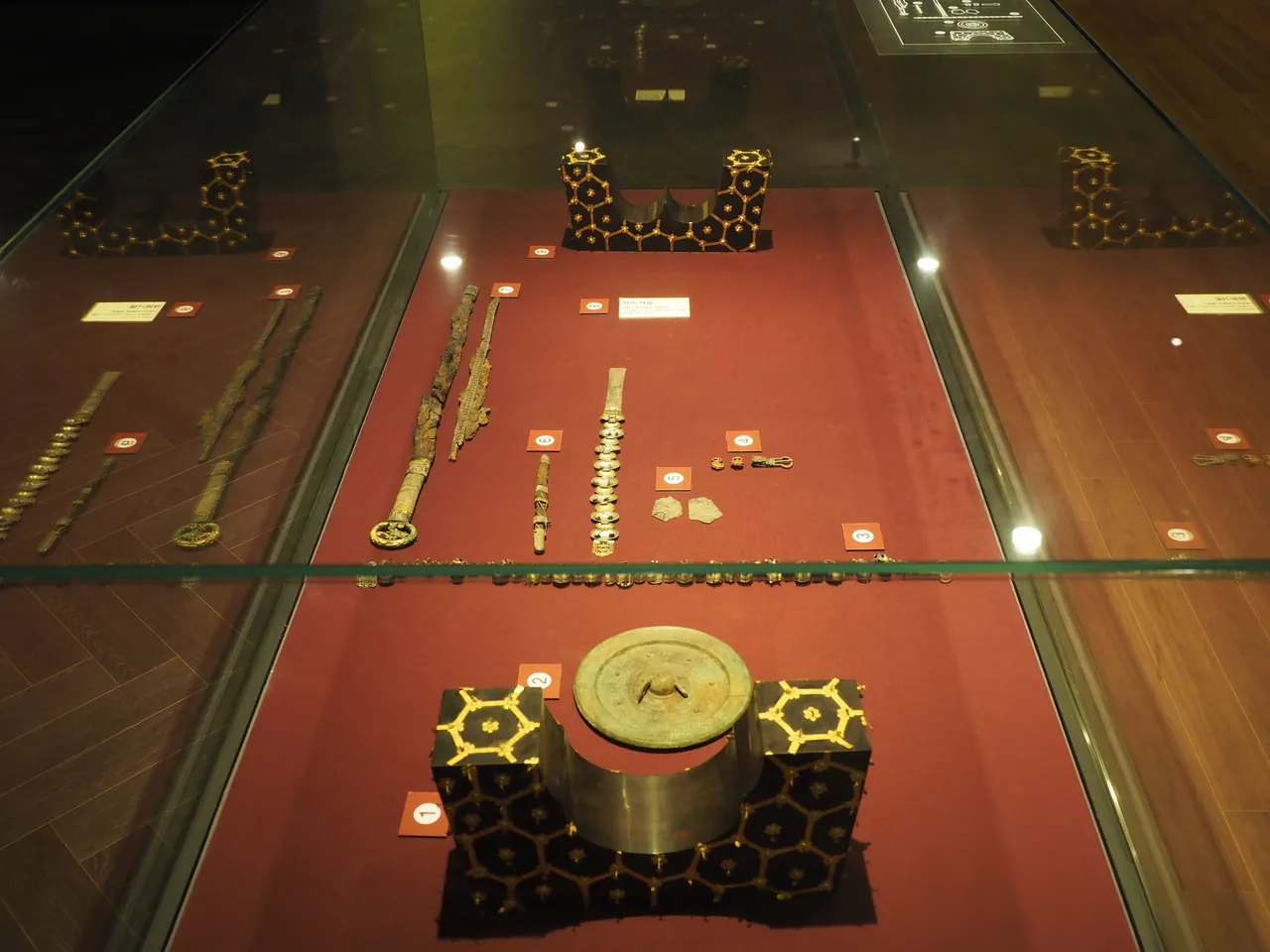
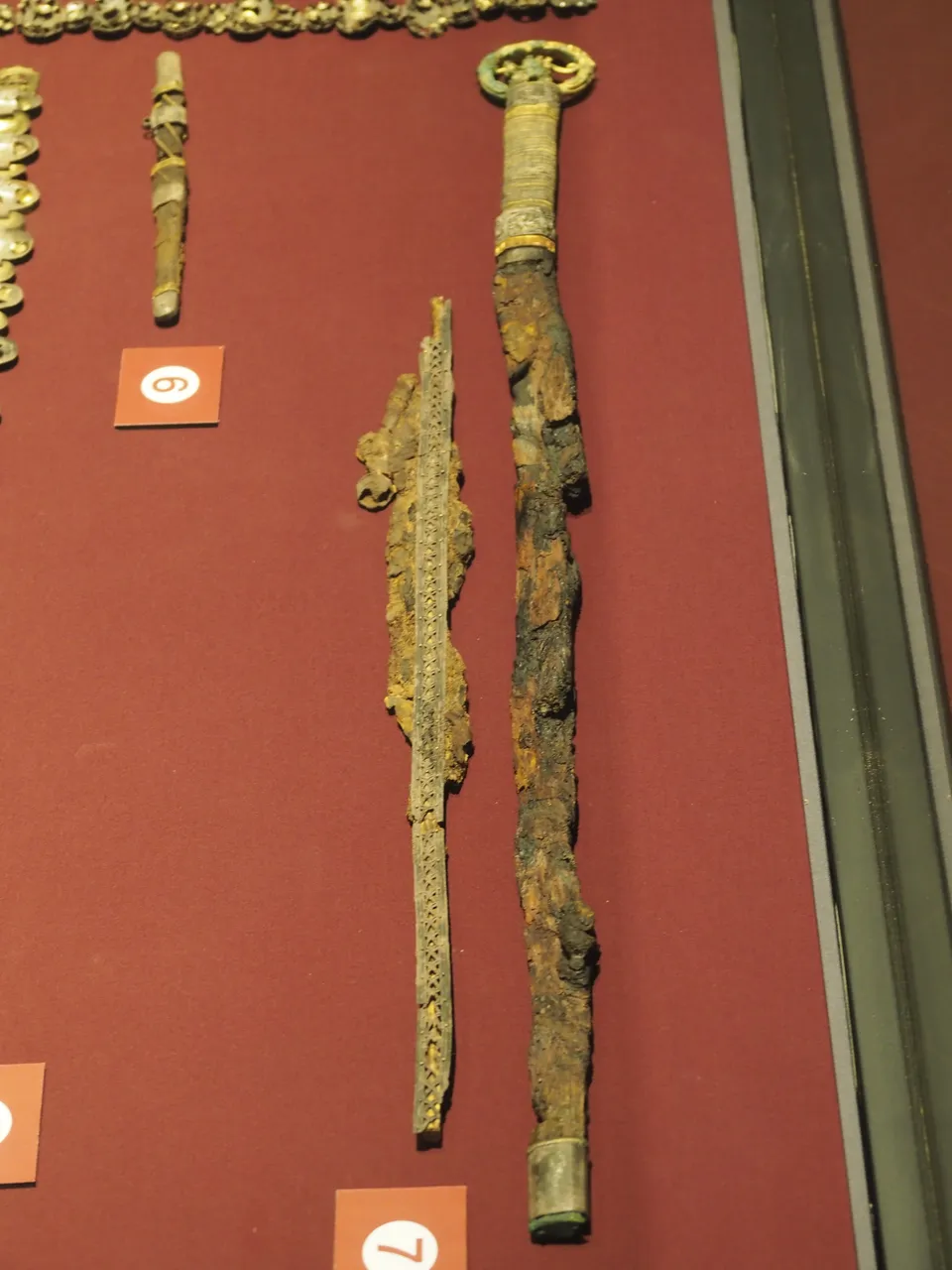
Below was Queen's
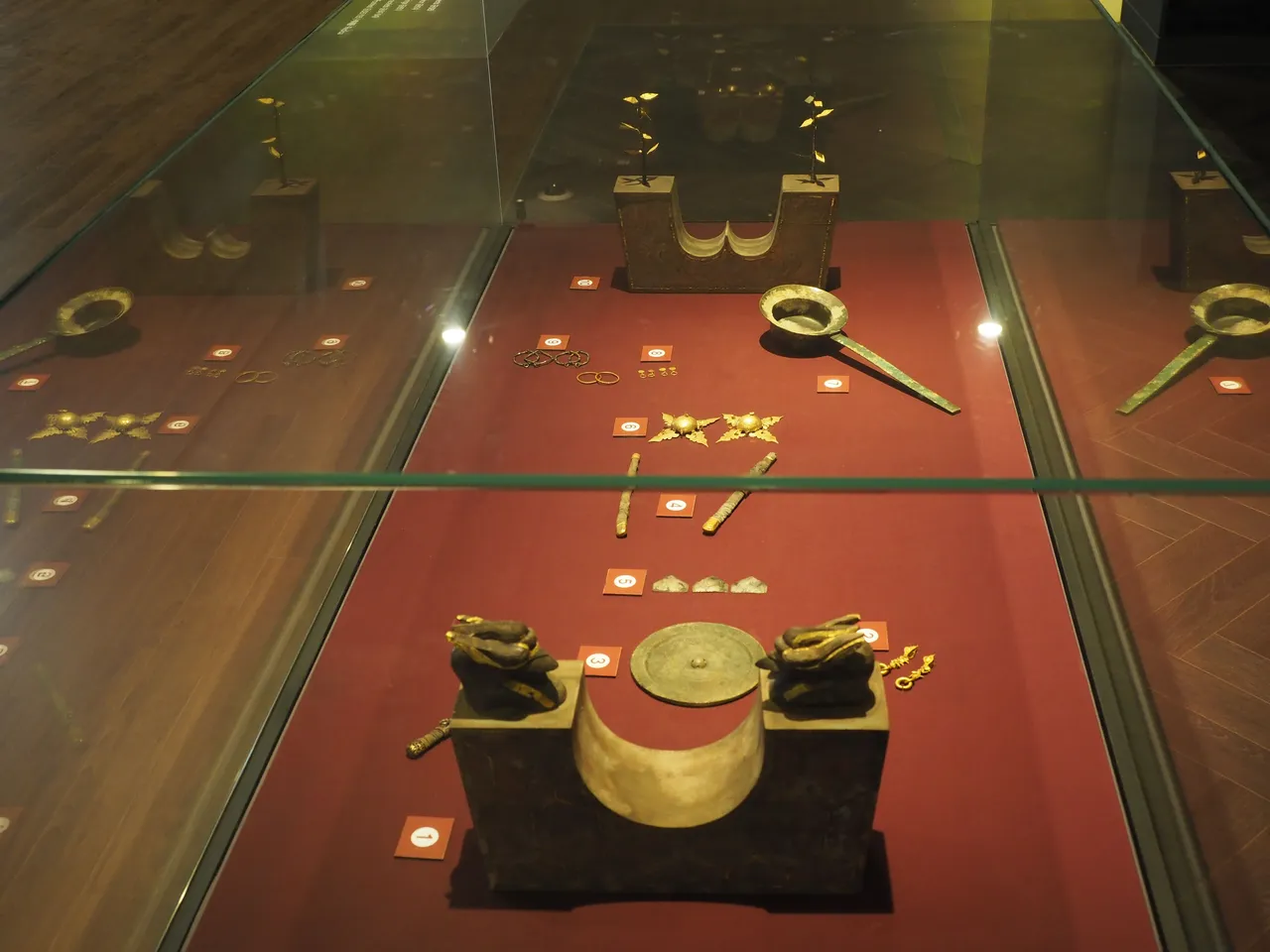
Some of those stuffs were imitated, and the original relics have been kept in the National Museum in Seoul.
So we need to visit Seoul National Museum to look at the real ones.
The whole relics had been brought to Seoul National Museum, because there was no facilities near Gongju area for protecting relics.
Moreover, it was a first excavation after the independence from Japanese colonial rule, so there were no experts in excavation at that time.
Even though the tomb of King Muryeong was the first and the sole case in the excavations of Baekje Kingdom, the process of the excavation had been undergone not properly.
Thank you for reading.